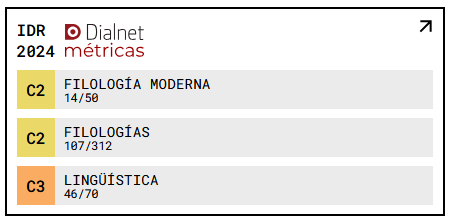The R files : applying relevance model to conspiracy theory fallacies
DOI:
https://doi.org/10.18172/jes.41Abstract
The general aim of this article is to test how the relevance model can be of use to model argumentation. More specifically, to check if the theory developed by Sperber and Wilson (1986) is able to explain some specific fallacies, the so called "conspiracy theory fallacy". This paper contains: a short introduction both to fallacies and to relevance theory; a summary of two real conspiracy theories taken from the book "The 60 greatest conspiracies of all times", and a detailed analysis of these two conspiracies by means of the relevance model.Downloads
References
Giere, R. 1992. Understanding Scientific Reasoning. New York: Holt Rinehart & Winston.
Real Academia Española. 1992. Diccionario de la lengua española. Madrid: Espasa- Calpe.
Sperber, D. & D. Wilson. 1986. Relevance. Communication and Cognition. Oxford: Basil Blackwell.
Sperber, D. & D. Wilson. 19952. Relevance. Communication and Cognition. Oxford: Basil Blackwell.
Vankin, J. & J. Whalen. 1995. 60 Greatest Conspiracies of All Time. New York: Citadel Press Boobs.
Webster’s Encyclopedic Unabridged Dictionary of the English Language. 1994. New York: Random House.
Downloads
Published
How to Cite
Issue
Section
License
The authors retain copyright of articles and authorize Journal of English Studies the first publication. They are free to share, redistribute, and/or reprint the article without obtaining permission from the publisher as long as they give appropriate credit to the editor and the journal.
Self-archiving is allowed too. In fact, it is recommendable to deposit a PDF version of the paper in academic and/or institutional repositories.
It is recommended to include the DOI number.
This journal is licensed under a Creative Commons Attribution 4.0 International License














